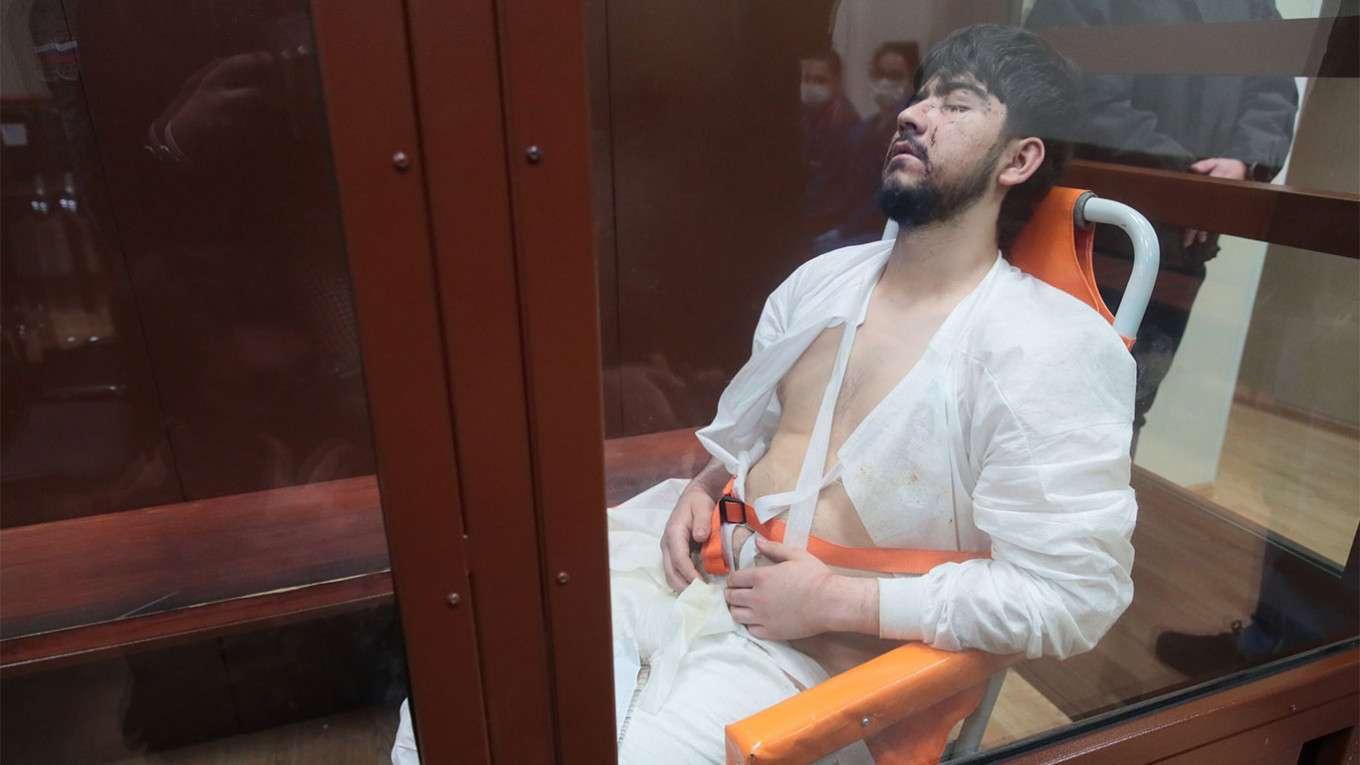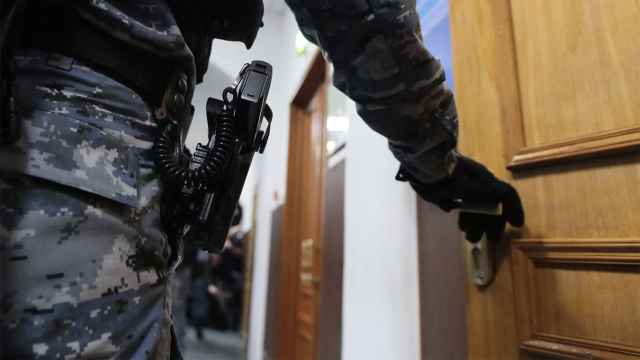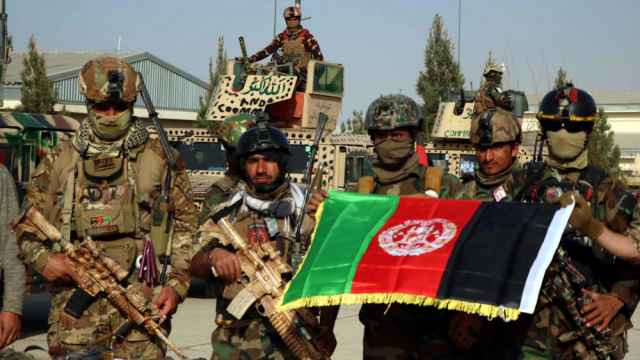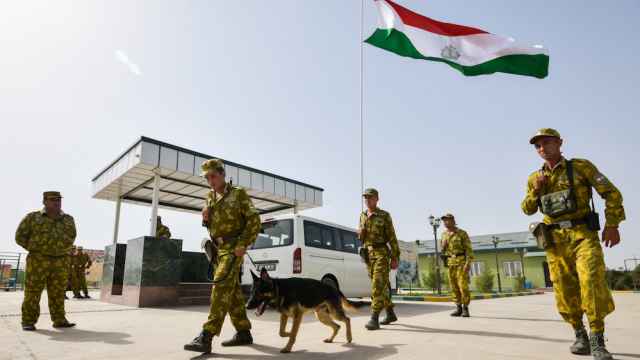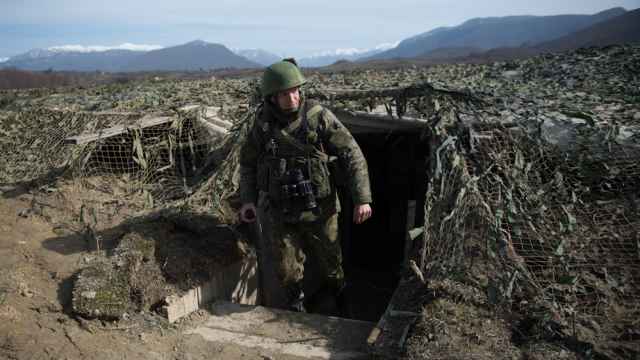Two days after the horrific attack on Crocus City Hall which has left over 130 dead, the bloodied suspects, showing visible signs of torture, were paraded in front of the media at Moscow’s Basmanny Court. All four men, Saidakrami Rachabalizoda, Mukhammadsobir Faizov, Shamsidin Fariduni, and the alleged ringleader Dalerjon Mirzoyev, are from Tajikistan.
The Russian government’s track record of politicizing extremism to crackdown on opposition, and the documented use of torture against the suspects, will make it difficult for us to know what really happened. But that the four Tajiks took part in an attack the Islamic State claims to have perpetrated is certainly plausible given the recent past.
Between 2012 and 2018, over 2,000 Tajik citizens joined terrorist groups in Syria and Iraq, making Tajikistan the third highest sender of foreign fighters to the war on a per capita basis. Most joined Islamic State, with some taking up key positions, including the group’s War Minister Gulmurod Halimov, who used to serve as head of Tajikistan’s OMON paramilitary police force.
Most were killed, detained, or returned to Tajikistan during a government amnesty introduced in 2015. But ISIS’s demise did not spell the end of the threat. As the group lost territory some moved to Europe.
At the same time, the group’s affiliate in Afghanistan, the Islamic State of Khorasan Province (ISIS-K) had emerged in 2014, and was waging a war against both the Afghan government and its NATO allies, as well as the Taliban. The group targeted Central Asians, and Tajiks in particular, in its recruitment efforts.
Although never as successful as in its heyday a decade ago, a steady trickle of Tajik citizens joined the group, playing a key role in its operations. Citizens of Tajikistan were involved in an attack in Kerman, Iran on Jan. 3, that killed at least 95 people commemorating the death of Qassem Soleimani. In December, at least three Tajik citizens were arrested for plotting an attack on a Christmas celebration in Austria.
But these incidents should not be blown out of proportion. The vast majority of Tajiks, some 99.98% of the population, have not joined terrorist groups. Violent extremist social media channels have tiny audiences, numbering in the low hundreds of people. Many more Tajiks have suffered from heavy-handed counter-terrorism measures at the hands of their autocratic government than have joined those organizations.
Tajikistan is the poorest and one of the most authoritarian countries in Eurasia. Its president, Emomali Rahmon, has ruled since 1992. His government orchestrated a brutal crackdown on all forms of opposition, including religious communities. Using the specter of extremism and terrorism, the regime has arrested hundreds of journalists, opposition activists, religious individuals, and civil society representatives, banning the only opposition party with representatives in parliament in 2015.
While the country’s young population is increasingly taking an interest in Islam, the government is waging a campaign of control over religious expression. Citizens were banned from studying religion abroad without government permission in 2011. Children were banned from praying in mosques that same year. All madrassas in the country had been closed by 2013.
In 2023 alone, 300 cases of illegal religious education were reported by the government. Such a controlled environment not only generates grievances that can be capitalized on by terrorist groups, but also limits levels of religious literacy, making the simplistic narratives of groups like Islamic State more appealing.
Against this backdrop, over one million Tajiks have moved to Russia in search of work according to official statistics from 2023. The true figure is much higher, as many migrants are undocumented. Last year, remittances made up a staggering 48% of the economy, the highest share in the world.
Life for migrants is already tough, with harsh working conditions, low pay, problems with police, and widespread xenophobia a part of daily life for most. After the attack, life for the country’s already beleaguered Tajik community, as well as others from Central Asia, looks set to become much worse.
In the day following the attack and arrests a string of incidents have already taken place. A market owned by Tajiks in Blagoveshchensk in the far-east Amur region, was torched. Three Tajik migrants were beaten by unidentified assailants in Kaluga. Mediazona reports at least 30 similar cases of violence against migrants since Friday’s attack.
One NGO working with migrants reported over 2,500 complaints in the first two days following the attack. Tajiks have reported being evicted without reason, Screenshots have circulated on social media showing taxi riders on apps like Yandex refusing to travel with Tajik drivers. Law enforcement has launched raids across the country to find and detain illegal immigrants. Viral videos are circulating on social media calling for Tajiks to be deported, claiming they are all “terrorists” and calling for the death penalty to be reintroduced.
The Tajik Embassy in Russia has called on migrant workers not to leave their homes for their own safety. But many do not have that luxury.
While we may never have the full story of what happened at Crocus City Hall, what looks certain is that Tajiks and other Central Asians will unfairly bear the brunt of Russian society’s justified anger. Once again, the majority suffer for the alleged actions of a tiny minority.
A Message from The Moscow Times:
Dear readers,
We are facing unprecedented challenges. Russia's Prosecutor General's Office has designated The Moscow Times as an "undesirable" organization, criminalizing our work and putting our staff at risk of prosecution. This follows our earlier unjust labeling as a "foreign agent."
These actions are direct attempts to silence independent journalism in Russia. The authorities claim our work "discredits the decisions of the Russian leadership." We see things differently: we strive to provide accurate, unbiased reporting on Russia.
We, the journalists of The Moscow Times, refuse to be silenced. But to continue our work, we need your help.
Your support, no matter how small, makes a world of difference. If you can, please support us monthly starting from just $2. It's quick to set up, and every contribution makes a significant impact.
By supporting The Moscow Times, you're defending open, independent journalism in the face of repression. Thank you for standing with us.
Remind me later.



